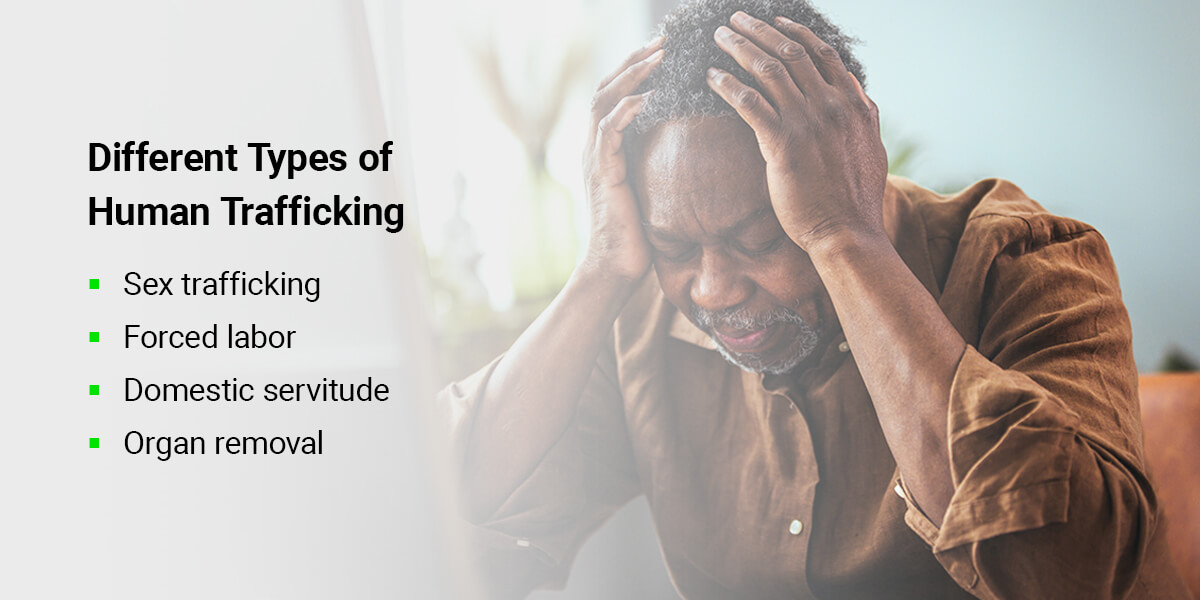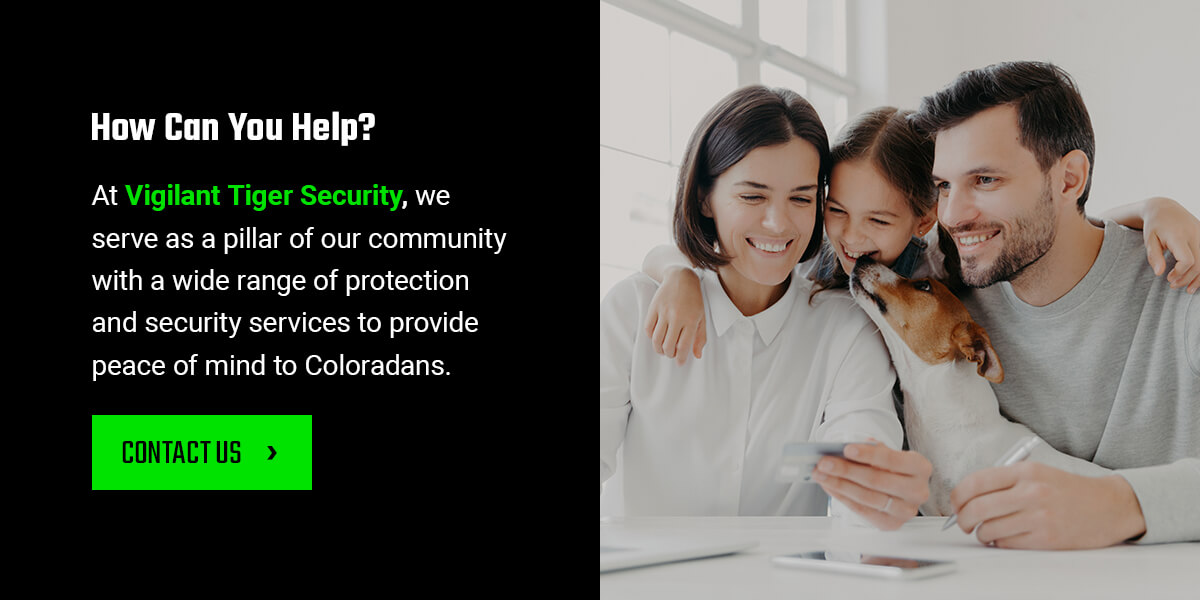
How to Prevent and Spot Human Trafficking
August 22, 2023

Trafficking, also known as modern-day slavery, impacts nearly 28 million victims at any given moment. Human traffickers generally exploit people for profit through sexual acts, labor, servitude and many other types of recruitment. Regardless of age, race or gender identity, anyone can be a victim of trafficking, even in broad daylight.
Though you may be aware of the dangers of human trafficking, you may not understand how traffickers target their victims or how to detect this issue in an everyday setting. Everyone can and should notice and report indicators of this crime. We’re here to help you learn how to spot human trafficking and keep your loved ones and community safe.
How to Identify Human Trafficking
Since traffickers want to avoid giving their victims a chance to escape or ask for help, they tend to work secretly. However, in many instances, you might see a trafficker and their targets in public. These settings include restaurants, health care facilities, hotels, construction sites and small businesses like nail salons. In these situations, the trafficker has likely threatened to harm the victim or their family in some way, like having them deported.
A human trafficking victim may be too fearful to speak up. Noticing signs of human trafficking can trigger your intuition and help you report a suspicious person or situation, saving a life. A potential human trafficking victim may appear:
- Fearful
- Submissive
- Confused
- Nervous
- Scared
- Panicked
- Depressed
- Disoriented or disassociated
- Bruised or injured
- Malnourished
- Dirty
- Isolated from family or friends
- Numb or detached
These are the first physical signs you may notice from a quick interaction or glance at the person. However, plenty of other red flags can spark your gut feeling and identify someone as a victim, such as:
- They have stopped attending school.
- They have drastically changed their behavior.
- They don’t seem to have freedom of movement.
- They dress inappropriately compared to those they are with.
- They work excessively long hours or live at their workplace.
- They show signs of lacking medical care, sleep, food or water.
- They are constantly with another person who seems to be controlling them.
- Someone else appears to monitor all their interactions.
- They defer to someone else before speaking or another person speaks for them.
- They show visible signs of injury, such as burns, scars or skin problems from an unsanitary environment.
- They can’t share details about themselves — their name, age, etc.
- They seem to have rehearsed or scripted language when answering questions.
- They appear to live in poor conditions.
- They have tattoos that look like branding marks.
- Their home has extreme or unreasonable security measures.
- They lack personal possessions.
- They avoid eye contact.
- They have untreated sexually transmitted infections.
- They have untreated injuries from sexual assault or forced abortions.
- They lack proper identification documents.
- They are often with an older man who they call their guardian, manager, father or boyfriend.
- They have limited social interactions.
- They feel pressured by their employer to stay at their job.
- They live in an overcrowded situation provided by their employer.
- They are under threat from an employer.
- Guards transport them from place to place.
- They owe someone a significant debt that they are working to pay off.
- They have become addicted to drugs or alcohol as a way to cope.
- They are under 18 and engaging in commercial sex acts or prostitution.
- They have become attached to their trafficker, known as trauma bonding.
Anyone can be a trafficker. In many cases, traffickers are someone their victim knows, such as a family member, spouse, significant other, intimate partner, friend, co-worker or employer. These situations generally occur because the trafficker has promised the person something they need in exchange for sexual favors or work.
Different Types of Human Trafficking

The U.S. Department of State recognizes sex trafficking and forced labor as the primary forms of human trafficking. However, other types of trafficking exist in every corner of the world. Here’s a brief overview of the different forms of human trafficking.
- Sex trafficking: Also known as sexual exploitation, this form of human trafficking involves forcing people to engage in sex acts. These include various types of prostitution or pornography, where the victim must have sex in exchange for food, shelter, drugs or money. Some forms of sex trafficking involve individual traffickers, known as pimps or “managers,” who control victims by making them form an attachment through a false sense of trust or love. According to the American Psychological Association, seven out of 10 victims of sex and labor trafficking are women and girls.
- Forced labor: Also known as labor trafficking, forced labor occurs when a victim works against their will due to threats of violence, fraud or coercion. Impoverished people, migrants and those with an unstable immigration status are particularly vulnerable to forced labor trafficking — totaling 28 million people as of 2021. This form of trafficking typically involves unsafe conditions and unlawful wages.
- Domestic servitude: Victims who are not free to leave their employment may fall under domestic servitude. These people may receive some protections or benefits, but can’t leave the residence.
- Forced marriage: This type of trafficking occurs when one partner does not consent — or is not old enough to agree — to the union. Without consent, the marriage becomes involuntary servitude. Threats of violence can coerce a person, usually a woman or young girl, into marriage. As of 2022, approximately 650 million girls and women are in a forced marriage.
- Organ removal: Some traffickers use victims for their bones, blood and organs and leave them for dead. Some victims are desperate patients awaiting a lifesaving transplant, only to have criminals harvest their organs. Others get kidnapped or abducted for their organs. Organ trafficking generates upward of $1.7 billion each year.
Spotting Red Flags in Social Media Profiles
According to the Administration for Children and Families, social media channels have become a prominent way for traffickers to target their victims. As of 2020, there has been an increase of over 125% in reports of trafficking recruitment on social media. Traffickers use these public platforms to gather information about their victims, such as their name, age, location, school or job.
Here are some tips for spotting a potential trafficking predator on your social media profiles and keeping yourself safe:
- Their profile has a suspiciously low number of followers.
- They only have one or a few photos.
- They do not share any posts or updates.
- They have no comments from family or friends.
- Nobody has tagged them in any photos.
- Their email does not match their username for the account.
- They message you and try to get to know you without knowing you in real life.
- They seem to know a lot about you even though you’ve never met.
How Can You Help?

Learning how to prevent human trafficking starts with educating yourself and the people around you — including your children. Young people are particularly vulnerable to human trafficking because they are more trusting and may not be aware of potential danger or signs of abuse. Expanding awareness in your community starts at home. Talk to your children, family members and friends about human trafficking. Discuss some potential situations in which your kids might be vulnerable to predators, such as at a public park, the mall or the beach.
If you run a business, train your employees to spot signs of human trafficking victims. Have a protocol set in place and be sure to respond to suspicious activity in your workplace. You can even post signage about human trafficking and how employees and customers should react if they see something.
Staying observant in public can save someone’s life. Callers to the National Human Trafficking Hotline reported more than 10,000 human trafficking cases in 2021. If you see something suspicious, whether it’s a young woman walking alone with a group of older men, a child working in a restaurant or a disturbing social media post — report it. You can contact your local police, federal law enforcement at 866-347-2423 or the National Human Trafficking Hotline at 888-373-7888.
At Vigilant Tiger Security, we serve as a pillar of our community with a wide range of protection and security services to provide peace of mind to Coloradans. Contact us today to learn more about spreading awareness of human trafficking and keeping yourself and your business safe.
